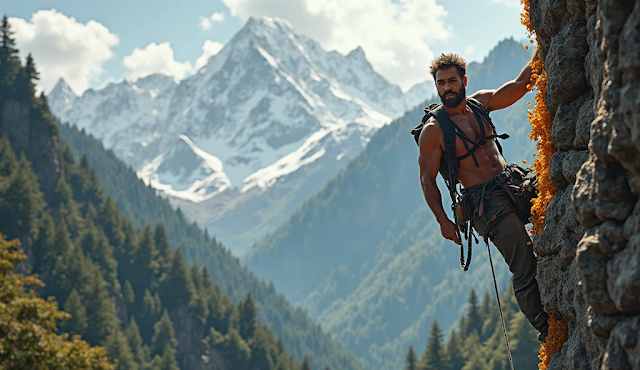While the first snow of the season has just blanketed Mustang in a stunning layer of white, the idea that it's now the "best" time to visit depends entirely on the kind of experience you're seeking -
4-6. The truth is, Mustang and the sacred Muktinath Temple offer distinct adventures all year round, each with its own unique magic and challenges.
The table below provides a quick overview to help you understand what each season brings.
| Season | Best For | Weather & Conditions | Key Considerations |
|---|---|---|---|
| Spring (Mar-May) | Ideal trekking, festivals, and clear views -1-5 | Pleasant days (16-22°C), cold nights (-6°C) -1-5 | Peak season; book in advance -1-7 |
| Summer/Monsoon (Jun-Aug) | Solitude, escaping monsoon rains elsewhere -1-9 | Warm, dry in Upper Mustang -1-9 | Potential travel delays; roads can be challenging -2-5 |
| Autumn (Sep-Nov) | Perfect weather, clear skies, and peak festivals -2-3 | Stable weather, clear skies, cold nights -1-9 | Most crowded and expensive time -7 |
| Winter (Dec-Feb) | Snow landscapes, solitude, and unique festivals -2-5 | Very cold, heavy snowfall, some road closures -2-4 | Requires extreme cold-weather gear; some services closed -5 |
❄️ A Winter Wonderland for the Intrepid Traveler
Visiting Mustang in winter is not for the faint of heart, but it rewards you with breathtaking, snow-covered landscapes and profound silence. The region is transformed into a pristine white paradise, offering a solitude you won't find in busier months -5-7.
However, this beauty comes with challenges. The district administration itself may issue travel advisories, urging people to avoid roads like the one from Kagbeni to Muktinath due to heavy snow accumulation and the risk of accidents -4-6. As of October 28, 2025, the season's first snowfall has already caused disruptions in the Muktinath area and Upper Mustang, illustrating how quickly conditions can change -4-6.
If you are an experienced traveler with proper winter gear and a flexible schedule, a winter journey can be incredibly rewarding. You'll witness local life continuing amidst the snow and, if your timing is right, experience the Toren La festival in February, the Thakali community's New Year celebration -5.
🌸 Spring and Autumn: The Premier Seasons for Most Travelers
For a balance of good weather, accessibility, and cultural richness, spring (March to May) and autumn (September to November) are universally acclaimed as the best times to visit -1-3-9.
Spring brings warmer days, clear skies perfect for mountain viewing, and blooming rhododendrons in Lower Mustang -1-5. This season is also highlighted by the vibrant Tiji Festival in Lo Manthang, a three-day celebration of Tibetan Buddhism featuring masked dances -1-7.
Autumn is considered the absolute peak season. The weather is at its most stable, with dry trails and excellent visibility of the Himalayas -2-3. This period also coincides with major Nepali festivals like Dashain and Tihar, adding a vibrant cultural layer to your visit -5-8.
The main drawback during these prime windows is the crowd. You'll be sharing the trails and teahouses with many other travelers, and prices for flights and accommodation are at their highest -7.
🌧️ Summer/Monsoon: An Unexpected Opportunity
While much of Nepal is drenched by monsoon rains from June to August, Upper Mustang lies in a rain shadow -1-9. This makes it a unique summer destination, as it remains relatively dry and accessible for trekking when other popular routes are slick with mud -9.
The landscapes are tinged with green, and you can experience the Yartung Festival in August, a lively event featuring horse racing and local celebrations -5-8. The primary challenge during this season is not rain in Upper Mustang itself, but its impact on travel logistics. Flights to Jomsom from Pokhara can be frequently delayed or canceled, and the roads leading to the region can be affected by landslides -2-5.
🧭 Essential Travel Tips for Your Journey
No matter when you decide to go, proper planning is key to a safe and enjoyable trip.
Packing for the Extremes: The high-altitude climate means temperatures swing dramatically between day and night. Layered clothing is essential. In winter, you will need a heavy down jacket, thermal underwear, and insulated waterproof boots -2. Even in spring and autumn, pack a light to medium jacket, as nights can be freezing -2.
Navigating Permits and Accessibility: Mustang is a restricted region, requiring a special permit. These are generally easier to obtain during the spring and autumn seasons -7. Always check the latest road and flight conditions with local authorities or your travel agency before your journey, especially outside the peak seasons -4.
Spiritual Significance of Muktinath: Remember that Muktinath is one of the holiest sites for both Hindus and Buddhists -8. The temple is open year-round, but your ability to perform rituals like bathing in the 108 sacred water spouts will be more comfortable in the milder temperatures of autumn and spring -2
.
✨ Conclusion: Find Your Perfect Season
So, is it the "best" time to visit a snowy Mustang and Muktinath? If you are a well-prepared adventurer seeking solitude and stunning winter scenery, then yes, winter offers a unique and powerful experience. However, for most travelers looking for the ideal balance of comfort, accessibility, and cultural immersion, the crowns still go to spring and autumn.
Let your personal travel style and appetite for adventure be your guide. Whether you seek the vibrant energy of a festival or the serene silence of a snow-covered valley, Mustang has a season waiting for you.
Have you experienced the dramatic seasons of Mustang? Share your own stories and tips in the comments below!






0 Comments